Food in Japan is a way of life. Every meal, whether it is a famous Japanese street food picked up at a busy street stall or enjoyed in a quiet restaurant, carries a sense of balance and mindfulness. The Japanese way of eating is slow, thoughtful, and respectful, which is one reason the country is often linked with longevity and good health.
Did you know what ‘Hara Hachi Bu’ is?
|
Do you practise Hara Hachi Bu? If not, start implementing it for better health.
What This Guide Covers
- Best Japanese Street Foods: From takoyaki to taiyaki, found in lively markets, festivals, and neon-lit alleys.
- Famous Japanese Dishes: Sushi, ramen, tempura, and more, usually enjoyed in restaurants or food halls.
- Famous Markets & Cities to try each dish: Osaka for takoyaki, Hiroshima for okonomiyaki, etc.
As a tourist, enjoy the experience of both quick bites and sit-down meals. Try the snacks that locals grab on the go, but also take the time to savour a bowl of ramen, a piece of sushi, or a simple rice ball.
Note: In Japan, eating is not rushed. It reminds you to be present, taste carefully, and appreciate food as a connection to health, culture, and community.
Quick Japanese Food Terms Every Tourist Should Know
Knowing a few common Japanese food terms makes travelling (and eating!) much easier. These phrases will help you navigate menus, food halls, and street stalls like a local.
- Izakaya: Casual pub with drinks and small plates.
- Yatai: Street food stalls, often at festivals.
- Depachika: Department store food halls.
- Konbini: Convenience stores (like 7-Eleven, Lawson, FamilyMart) with tasty and cheap grab-and-go food.
- Teishoku: Set meal with rice, soup, a main dish, and small sides.
- Donburi: Rice bowls topped with meat, seafood, or vegetables.
- Bento: Packed lunch box, often sold at stations or convenience stores.
- Yoshoku: “Western-style” Japanese food, like curry rice, hamburger steak, or spaghetti.
- Washoku: Traditional Japanese cuisine.
- Nomihodai: All-you-can-drink option at izakayas or restaurants.
- Tabehodai: All-you-can-eat buffet style.
List of the Best Japanese Street Food
Street food in Japan is closely linked to festivals, night markets, and busy areas like Osaka’s Dotonbori and Tokyo’s Asakusa. Traditionally, yatai (street stalls) are set up during seasonal celebrations to offer quick and affordable food for people on the go.
Reasons Why Grabbing Japanese Street Food is an Excellent Choice for Tourists?
Over time, street food became a popular everyday choice in Japan because they are cheap, filling, and easy to eat while exploring. So, for tourists, street food is the fastest way to enjoy local flavours without spending much money.
It allows you to eat alongside locals, enjoy the lively atmosphere, and find dishes that restaurants might not offer. Trying street food lets you experience everyday Japanese culture, not just formal dining.
Japan can feel expensive, but street food can be a budget-friendly lifesaver for tourists. Grabbing takoyaki, onigiri, or yakisoba from a stall or konbini keeps you full while saving yen for other experiences.
So, let’s explore the popular Japanese street food list that you should try on your visit-
Takoyaki
Takoyaki are round, golden-brown balls. It is the signature street food of Osaka. It’s quick, affordable, and fun to eat. You should try it at festivals, night markets, and busy shopping streets. Watching vendors skillfully flip the balls in the hot iron pan is entertaining!
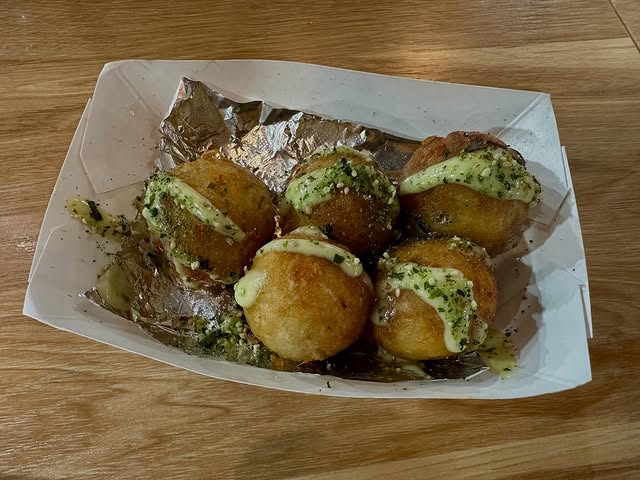
Ingredients Used
Wheat flour batter, diced octopus, tempura scraps (tenkasu), pickled ginger, and green onions.
They’re cooked in a special round moulded pan and topped with takoyaki sauce, Japanese mayo, aonori (seaweed flakes), and katsuobushi (bonito flakes).
What Does it Taste Like?
Crispy on the outside and soft, almost sticky, on the inside. The octopus pieces add a chewy bite, while the toppings bring a mix of sweet, savoury, and smoky flavours.
Where is it Found?
Takoyaki are found at almost every festival (matsuri) across Japan.
- Osaka: Especially Dotonbori and Kuromon Ichiba Market
- Tokyo: Asakusa
- Kyoto: Nishiki Market
Warning: they’re served piping hot! So, eat carefully.
Okonomiyaki
Okonomiyaki is known as “Japanese pizza” or “Japanese pancake,”. It is beloved because you can customise it with almost any ingredient. In fact, okonomi means “as you like it.”
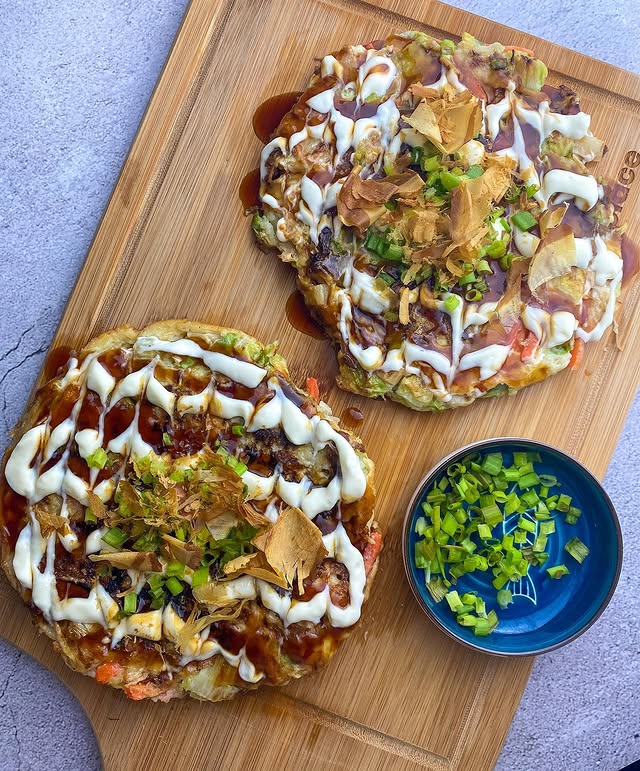
It’s a hearty dish that people often cook together at teppan (iron griddle) restaurants, which makes it a fun, social activity.
Ingredients Used
Flour, grated yams, eggs, shredded cabbage, and water or dashi.
Popular Fillings
Pork belly, shrimp, squid, cheese, or noodles (in Hiroshima-style). It’s topped with okonomiyaki sauce, Japanese mayo, aonori (seaweed flakes), and bonito flakes.
What Does it Taste Like?
It’s filling and rich in flavour, with a slight sweetness from the sauce. The cabbage adds crunch, and the toppings bring smoky, tangy, and creamy tastes together in one bite. Hiroshima-style has extra noodles, making it more layered and satisfying.
Where is it Found?
- Osaka (Dotonbori & Umeda)
- Hiroshima (Okonomimura food theme park)
You’ll also find it in festival stalls, casual okonomiyaki restaurants across Japan, and even some food halls.
Taiyaki
Taiyaki is a fish-shaped cake made from pancake or waffle-like batter. Its playful fish shape makes it instantly eye-catching and fun, especially for children and tourists.
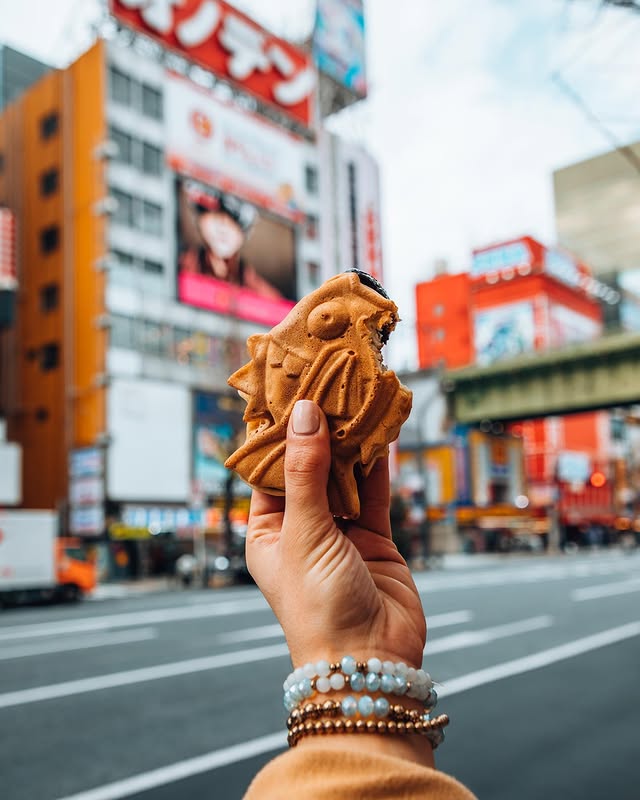
This dish is also deeply nostalgic for locals, as it’s often tied to festivals, fairs, and after-school snacks. Plus, with so many filling options, it appeals to everyone.
Ingredients Used
Filled with sweet red bean paste (anko), but modern versions come with custard, chocolate, matcha cream, or even delicious fillings like cheese and sweet potato.
What Does it Taste Like?
Warm, fluffy, and slightly crispy on the outside. The filling depends on your choice- red bean gives it a traditional, mildly sweet flavour, while custard and chocolate make it creamy and rich.
Where is it Found?
- Asakusa (Tokyo)
- Namba (Osaka)
- Street festivals
Taiyaki stalls are common at festivals (matsuri). You’ll also spot them in convenience stores, department store food halls, and trendy dessert cafés.
Karaage
Karaage is Japan’s ultimate comfort food- crispy, juicy, and bursting with flavour. It is Japanese-style fried chicken (The Japanese version of KFC). It pairs perfectly with beer, making it a hit at gatherings.
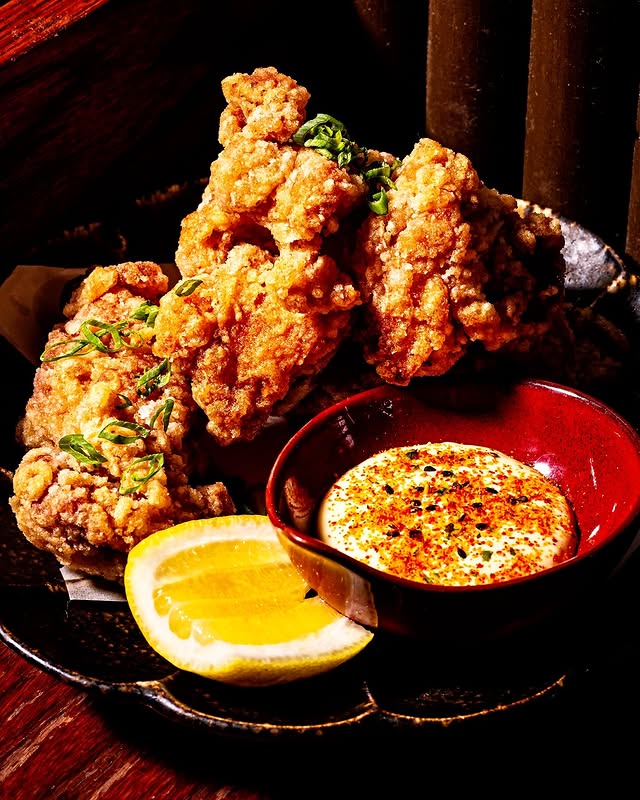
Ingredients Used
Thigh meat, soy sauce, garlic, and ginger, then coated with potato starch or flour and deep-fried until golden and crispy.
What Does it Taste Like?
The chicken is crispy on the outside and juicy on the inside. The marinade adds a mouthwatering garlic flavour with a touch of ginger, making it taste more aromatic and enjoyable than regular fried chicken.
Where is it Found?
- Ameya-Yokocho Market (Tokyo)
- Kuromon Ichiba Market (Osaka)
- Convenience stores (konbini) like 7-Eleven or Lawson
Note: You can also find it in specialty karaage shops in cities across Japan.
Yakisoba
Yakisoba is a stir-fried noodle dish, a festival classic and one of Japan’s most loved comfort foods. It is the go-to dish at summer matsuri and street stalls. It’s also nostalgic for locals, reminding them of childhood fairs and school events.
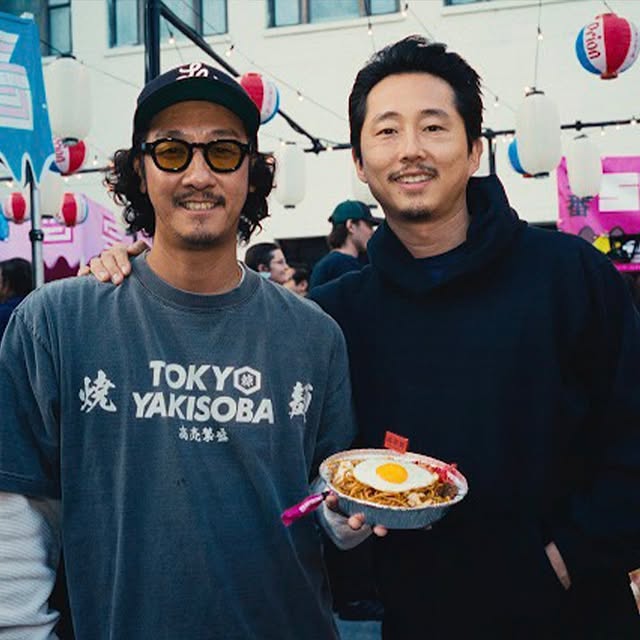
Ingredients Used
Wheat-based noodles (similar to ramen), sliced pork or chicken, cabbage, carrots, onions, and bean sprouts. Everything is tossed in a tangy-sweet yakisoba sauce (like Worcestershire), then topped with aonori (seaweed), pickled ginger (beni shoga), and sometimes a fried egg.
What Does it Taste Like?
Extremely delicious, smoky, and slightly sweet from the sauce, with a satisfying chew from the noodles. The pickled ginger on top adds a refreshing tang that balances the richness.
Where is it Found?
- Summer Matsuri (Festivals)
- Tsukiji Outer Market (Tokyo)
- Bento boxes at konbini
It’s also a staple at school and community events, making it one of Japan’s most accessible street foods.
Dango
Dango is a traditional snack, i.e., chewy rice flour dumplings that feel both festive and comforting. It’s tied to seasonal events, especially hanami (flower viewing), and is loved for its simplicity. Since it’s small, portable, and filling, it makes the perfect street-side treat.
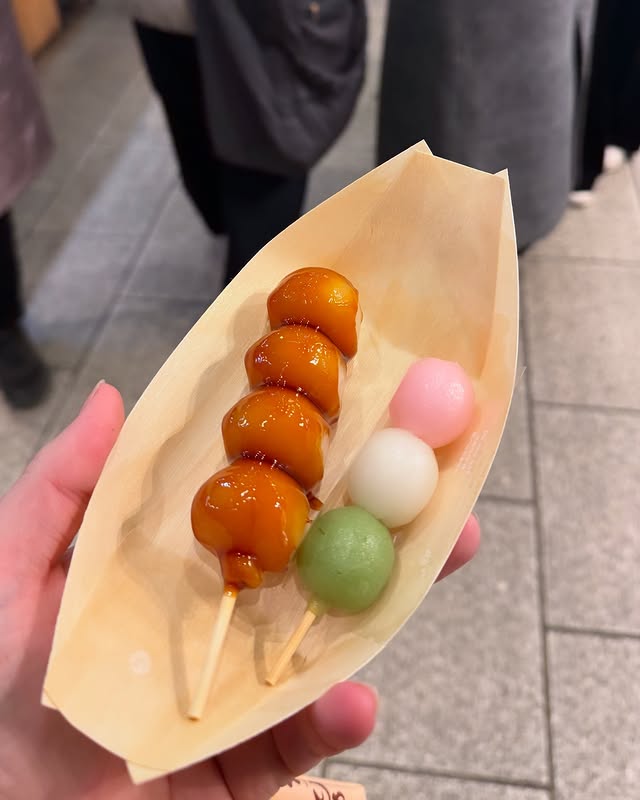
Ingredients Used
Rice flour (mochiko or shiratamako) mixed with water, rolled into small dumplings, and boiled or steamed.
Popular Toppings
- Mitarashi glaze: A sweet soy sauce syrup with a rich, savory-sweet balance.
- Anko: Aweet red bean paste, a classic filling in many Japanese desserts.
- Kinako: Roasted soybean flour with a nutty aroma.
- Hanami colors: Pink, white, and green shades, symbolizing spring festivals.
What Does it Taste Like?
Chewy and soft, with a mild rice flavour. The taste changes depending on toppings- mitarashi dango is sweet-savoury, anko dango is earthy-sweet, and kinako dango is nutty.
Where is it Found?
- Festivals (matsuri)
- Kyoto’s tea houses
- Shrine or temple stalls
- Supermarkets and konbini across Japan
Korokke
Korokke are Japanese croquettes. Introduced from French croquettes in the late 1800s, Korokke quickly became a Japanese comfort food. It’s inexpensive, widely available, and comes in many variations. Locals love it as a snack, in bento boxes, or tucked inside soft bread rolls for a quick korokke sandwich.
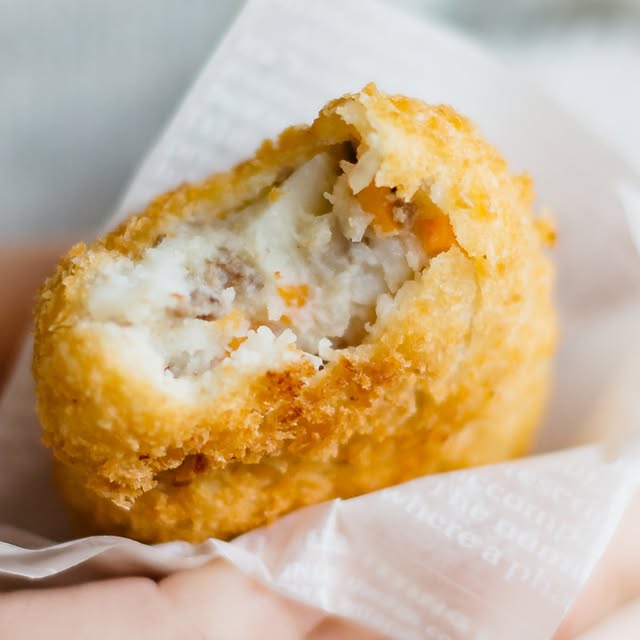
Ingredients Used
Mashed potatoes or ground meat, onions, flour, egg, and panko breadcrumbs
Variations Include
- Curry korokke
- Kabocha (pumpkin) korokke
- Meat-filled korokke.
What Does it Taste Like?
Crispy on the outside, soft and creamy inside. The potato version is mild, savoury, and comforting, while meat or curry versions are richer and more flavourful. Best enjoyed hot with a sprinkle of tonkatsu sauce.
Where is it Found?
- Ameya-Yokocho (Tokyo)
- Nishiki Market (Kyoto)
- Speciality croquette shops
- Department store food halls (depachika)
It’s a true everyday snack for locals and travellers alike.
Kakigori
Kakigōri is a classic Japanese summer treat, made from finely shaved ice topped with flavoured syrups. It is loved for its refreshing taste and light texture.
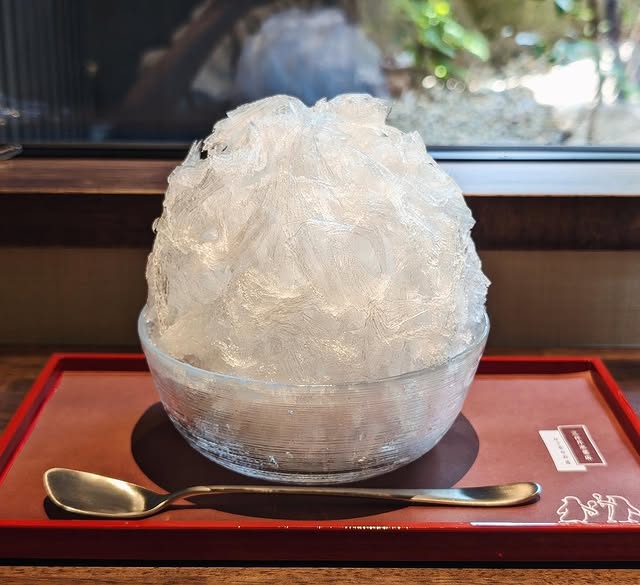
It has been enjoyed in Japan for centuries, dating back to the Heian period, when ice was a luxury. Today, it’s an essential part of summer festivals (matsuri) and a nostalgic favourite for locals.
Ingredients Used
Shaved ice, condensed milk, sweet red beans (anko), mochi pieces, or fruit for extra flavour and texture.
- Strawberry
- Melon
- Lemon
- Matcha
What Does it Taste Like?
Light, fluffy, and melt-in-your-mouth, it’s like tasting snow. The flavour changes based on the syrup or toppings you choose: it can be fruity and sweet with strawberry or melon, earthy with matcha, or creamy with condensed milk.
Where is it Found?
- Asakusa (Tokyo)
- Kyoto tea houses
- summer festivals
Modern versions are also popular in trendy cafés in Tokyo and Kyoto, with artistic toppings and seasonal flavours.
Ikayaki
Ikayaki is a dish made from whole squid. It’s a festival staple and a favourite in coastal regions of Japan. Simple yet flavourful, Ikayaki captures the fresh taste of the sea with just a few ingredients.
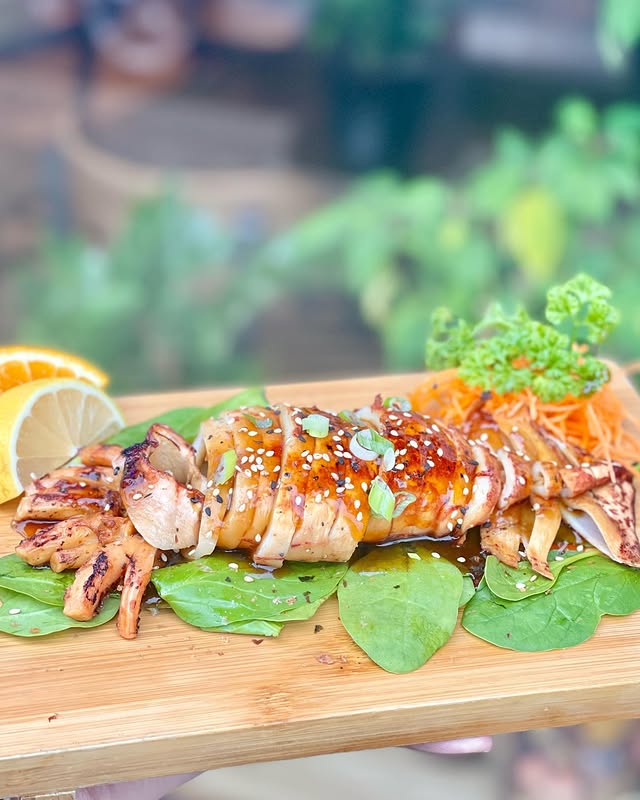
Ingredients Used
Whole squid, soy sauce or miso-based glaze. It is grilled over an open flame or a hot plate. It’s usually served on a stick or as sliced rings, sometimes with a squeeze of lemon.
What Does it Taste Like?
Tender, smoky, and slightly chewy. The soy glaze adds a flavourful umami punch, while the natural sweetness of the squid comes through. When miso is used, it has a deeper, richer flavour.
Where is it Found?
- Osaka (Kuromon Ichiba Market, Dotonbori)
- Coastal town food stalls
It’s also common in street stalls across Japan’s coastal regions.
Yaki Tomorokoshi
Yaki Tomorokoshi is a popular treat at summer festivals in Japan. It showcases the simplicity of Japanese street food by using fresh, local corn and enhancing it with simple, tasty seasonings. The smell of corn roasting on the fire is hard to resist at a matsuri.
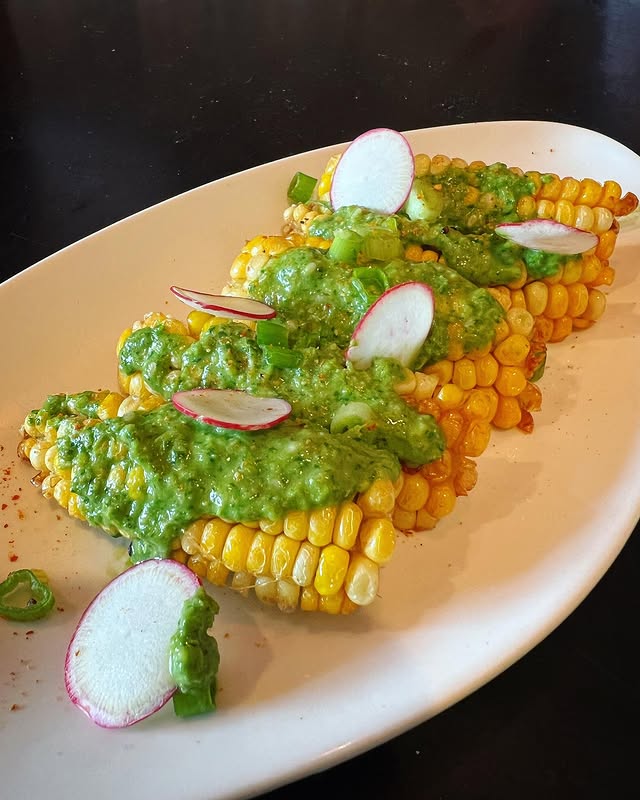
Ingredients Used
Fresh corn, soy sauce, mirin, butter. The corn is grilled on the cob over charcoal and roasted until slightly charred, giving it a smoky aroma and deep flavour.
What Does it Taste Like?
The dish is sweet, smoky, and tasty. The natural sweetness of the corn goes well with the salty soy glaze, and the slight char adds flavour. When you add butter, it becomes even richer.
Where is it Found?
- Summer Matsuri (Nationwide)
- Hokkaido food stalls
Kushikatsu
Kushikatsu originated in Osaka, where it became the ultimate casual snack to pair with drinks. This snack is popular with both locals and tourists because it’s affordable, fun to eat, and can be customised in many ways.
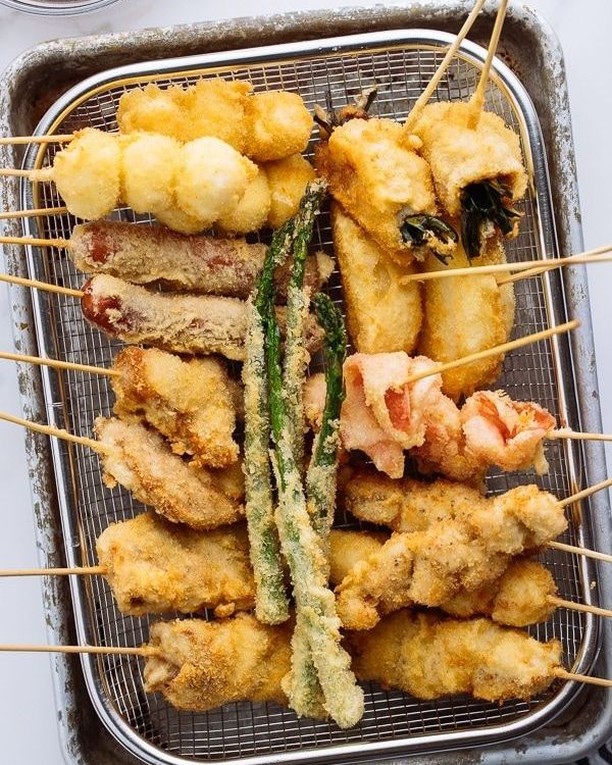
The “no double-dipping” rule for communal sauce trays also adds to the experience.
Ingredients Used
Meat, seafood, or vegetables, flour, egg, and panko breadcrumbs
Popular Fillings
Chicken, pork, prawns, mushrooms, pumpkin, and even cheese.
What Does it Taste Like?
These skewers are crunchy on the outside and juicy on the inside. Each skewer has its own unique flavour based on the filling- meat, seafood, or vegetables- but they all have a satisfying crunch from the panko coating. The tangy dipping sauce adds a boost of flavour.
Where is it Found?
- Shinsekai (Osaka)- birthplace of Kushikatsu
- izakayas (Japanese pubs)
- Street stalls
- Food halls
Nikuman
Nikuman are steamed buns, a comfort food especially during the cold winter months in Japan. It’s warm, filling, and easy to eat on the go. You’ll often see people grabbing them at convenience stores for a quick snack or late-night bite.
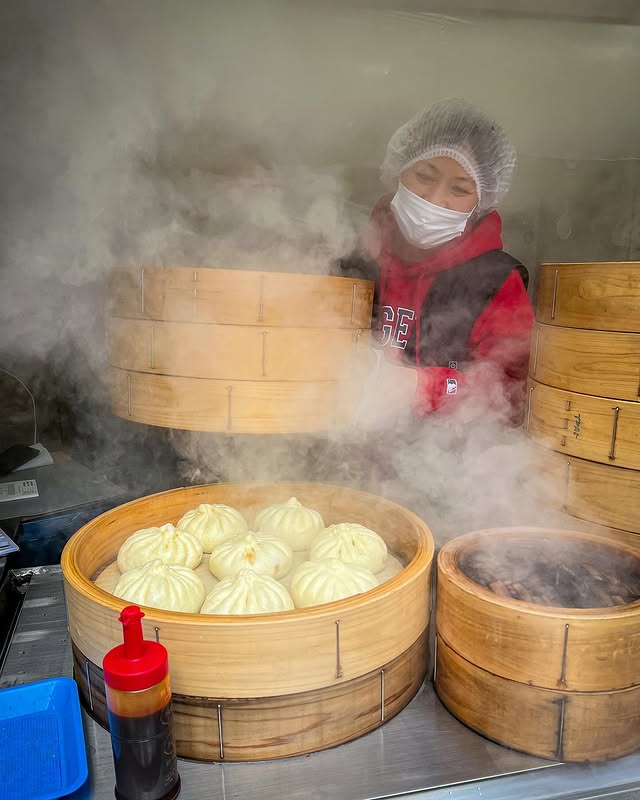
Ingredients Used
Fluffy dough filled with ground pork mixed with onion, garlic, soy sauce, ginger, and sometimes mushrooms or bamboo shoots. Variations include curry, vegetables, or even sweet red bean paste.
What Does it Taste Like?
The outer bun is soft and slightly sweet, while the inside is juicy, delicious, and full of umami from the pork and seasonings. Each bite balances fluffy bread with rich filling, making it both hearty and satisfying.
Where is it Found?
- Convenience stores (7-Eleven, Lawson, FamilyMart)
- Yokohama Chinatown
- Street stalls
- Chinese-inspired food shops in Japan.
In winter, convenience stores even keep them steaming at the counter for hungry customers.
Imagawayaki
Imagawayaki is a round, thick pancake-like snack. It’s one of Japan’s classic street desserts, dating back to the Edo period. Its nostalgic taste and affordable price make it beloved across generations.
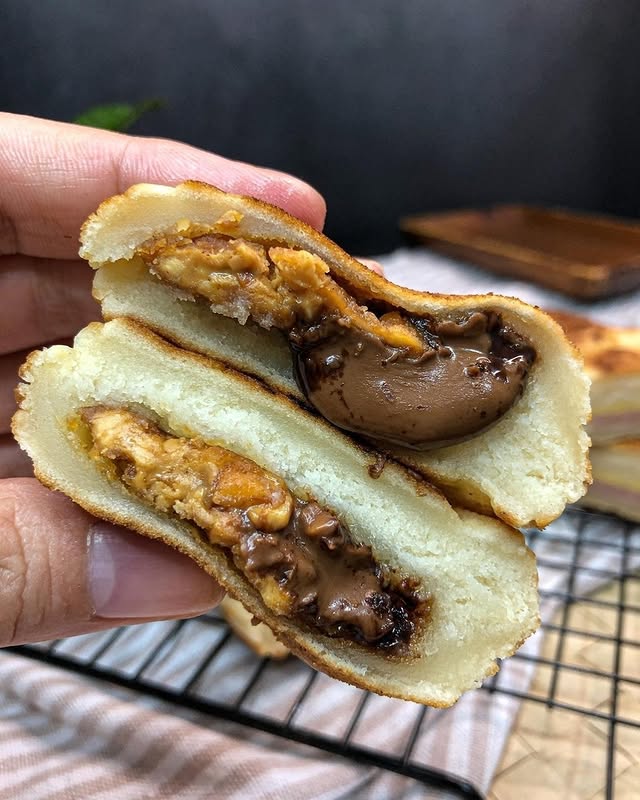
Ingredients Used
Batter (flour, eggs, sugar, and water) and filled with sweet red bean paste (anko). Nowadays, you can also find variations filled with custard cream, chocolate, cheese, or even tasty fillings.
What Does it Taste Like?
Warm, fluffy, and slightly crisp on the outside, with a gooey, sweet centre. The traditional red bean paste gives it an earthy sweetness, while modern versions can be creamy, rich, or savoury depending on the filling.
Where is it Found?
- Asakusa (Tokyo)
- Namba (Osaka)
- Temple festivals (matsuri)
- Street markets
- Dessert shops
It’s especially popular in Tokyo’s temple and shopping districts.
So, we already know the different Japanese street foods that are easily available in markets. But it’s not enough, visiting Japan and not trying out the famous Japanese foods, doesn’t make any sense. So, let’s learn about the must-try Japanese dishes.
Famous Japanese Foods
In this section, we are going to discuss the popular dishes of Japan that tourists must try. But note the difference, these are not the food that you get in the streets or night markets. Definitely, these dishes are usually restaurant dishes, not street food.
| Dish | Ingredients Used | What Does It Taste Like? | Where to Try |
| Sushi | Vinegared rice, fresh raw fish (tuna, salmon, eel), seaweed, and vegetables | Fresh and delicate with a balance of sweet, salty, and umami flavours |
|
| Ramen | Wheat noodles, broth (soy sauce, miso, tonkotsu, or shio), and toppings like pork, egg, nori, and spring onion | Rich, savoury, comforting- ranges from light and salty to thick and creamy |
|
| Tempura | Seafood (shrimp, fish), seasonal vegetables (pumpkin, sweet potato, mushrooms), coated in light batter and deep-fried | Crispy and light, not greasy, with a delicate crunch and subtle seafood/veggie sweetness |
|
| Udon | Thick chewy wheat noodles, served hot in dashi broth or cold with dipping sauce | Mild, savoury, and soothing- broth is light, noodles are hearty |
|
| Shabu Shabu | Thin slices of beef/pork, vegetables, tofu, mushrooms, cooked in hot broth and dipped in sauces (ponzu, sesame) | Light, fresh, and interactive- the flavour depends on the broth and dipping sauce |
|
| Yakiniku | Bite-sized beef/pork cuts grilled at the table, often with dipping sauces | Smoky, juicy, and savoury with a char-grilled flavour |
|
| Kaiseki | Multi-course meal with seasonal ingredients (sashimi, grilled fish, simmered vegetables, soup, rice) | Elegant, balanced, delicate flavours celebrating the season |
|
Tips for Travellers
- Learn simple greetings: A cheerful “Arigatou” (Thank you) or “Sumimasen” (Excuse me) goes a long way.
- Ordering food: Many stalls and restaurants display plastic food models (sampuru) or picture menus- simply point if you’re unsure.
- Cash is king: While Japan is modern, small stalls often prefer coins and notes over cards.
- Mindful eating: Eat slowly, savour the flavours, and avoid walking while eating- it’s part of the Japanese respect for food.
Conclusion
In Japan, food goes beyond just satisfying hunger; it also nourishes the soul. Whether you enjoy grilled yakitori in a lantern-lit alley or savour sushi in a quiet restaurant, every bite invites you to slow down and be mindful.
As a traveller, you’ll quickly notice that the Japanese way of eating teaches balance: light yet satisfying, simple yet full of flavour, humble yet deeply meaningful. This is where ‘Hara Hachi Bu’ meets the joy of discovery- portion control blended with culinary adventure.
So, when you’re wandering through Osaka’s markets, Kyoto’s tea houses, or Tokyo’s ramen shops, remember this: don’t just eat- experience. Pause between bites, notice the textures, the harmony of flavours, and the care that went into preparing your meal.
Because in Japan, eating isn’t just survival- it’s a celebration of life, health, and community. And if you carry even a little of that mindful spirit home, you’ll find that food everywhere begins to taste better.
Frequently Asked Questions about Japanese Street Food and Dining
Is street food safe in Japan?
Yes! Japanese street food is known for being clean, fresh, and safe. Vendors follow high hygiene standards, so you can enjoy your favourite snacks worry-free.
Do I need to tip at restaurants in Japan?
No. Tipping isn’t part of Japanese culture. Excellent service is already included, and leaving extra money may even confuse the staff.
Can vegetarians or vegans enjoy Japanese food?
Absolutely! Look out for vegetarian options like mochi, edamame, vegetable tempura, or sweet treats like taiyaki. Just be aware that some broths and sauces may contain fish stock.
How do I order food if I don’t speak Japanese?
Most food stalls and restaurants use picture menus or food replicas (sampuru)- you can simply point to what you’d like. Knowing a few phrases like “Kore kudasai” (This, please) makes it even easier.
What is the best time to try Japanese street food?
Evenings are the best, especially in markets, yatai stalls, and festival grounds, when the atmosphere is lively, and fresh food is constantly prepared.